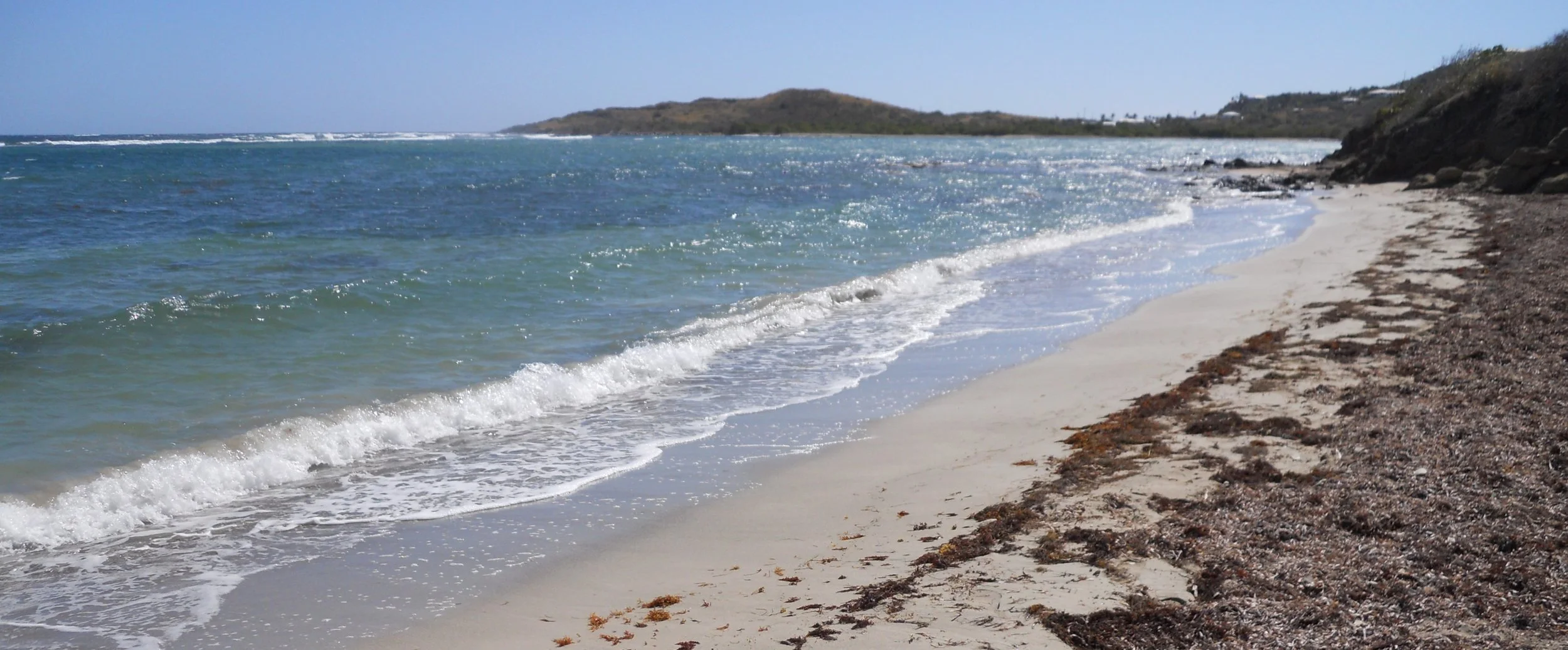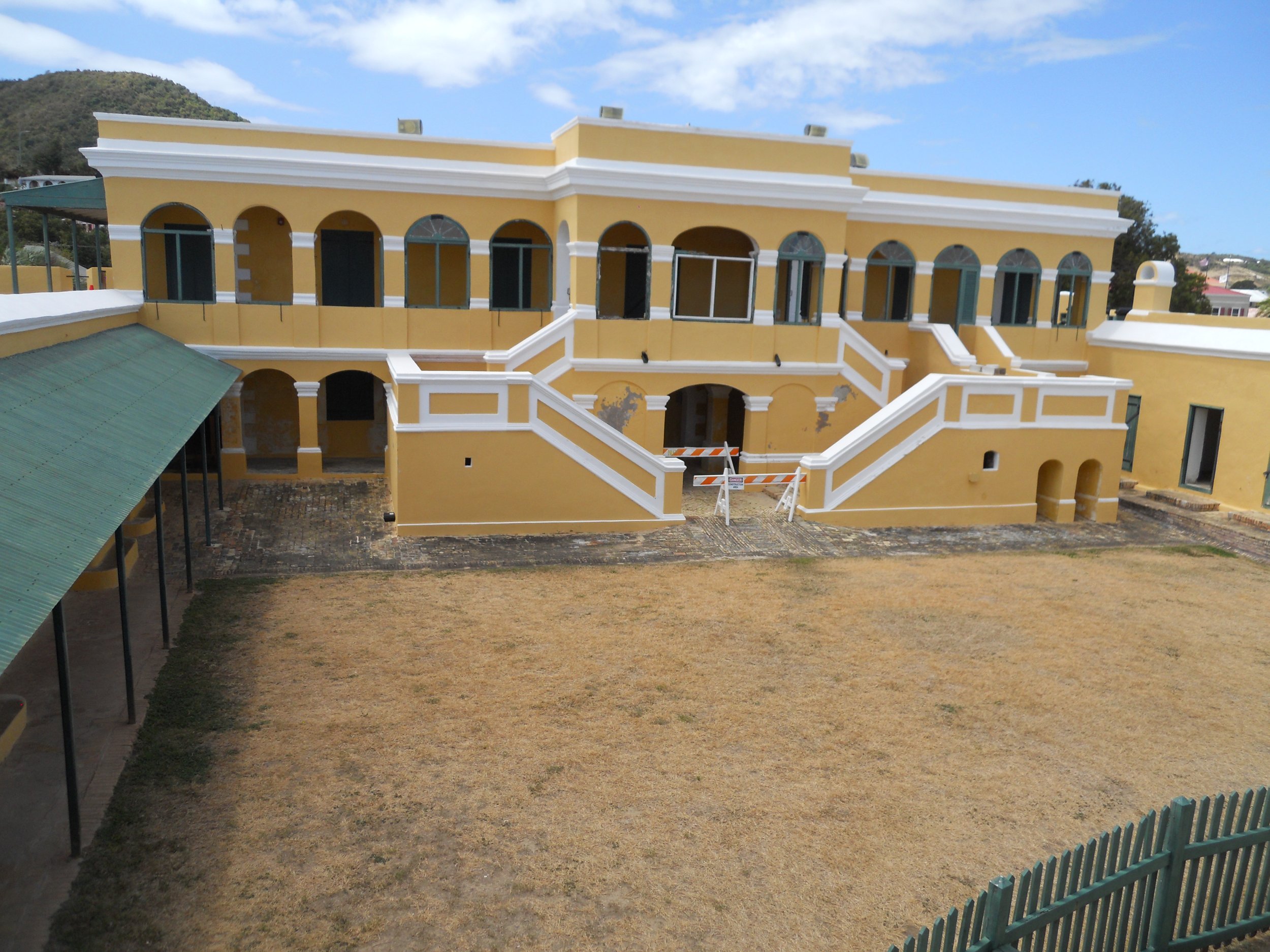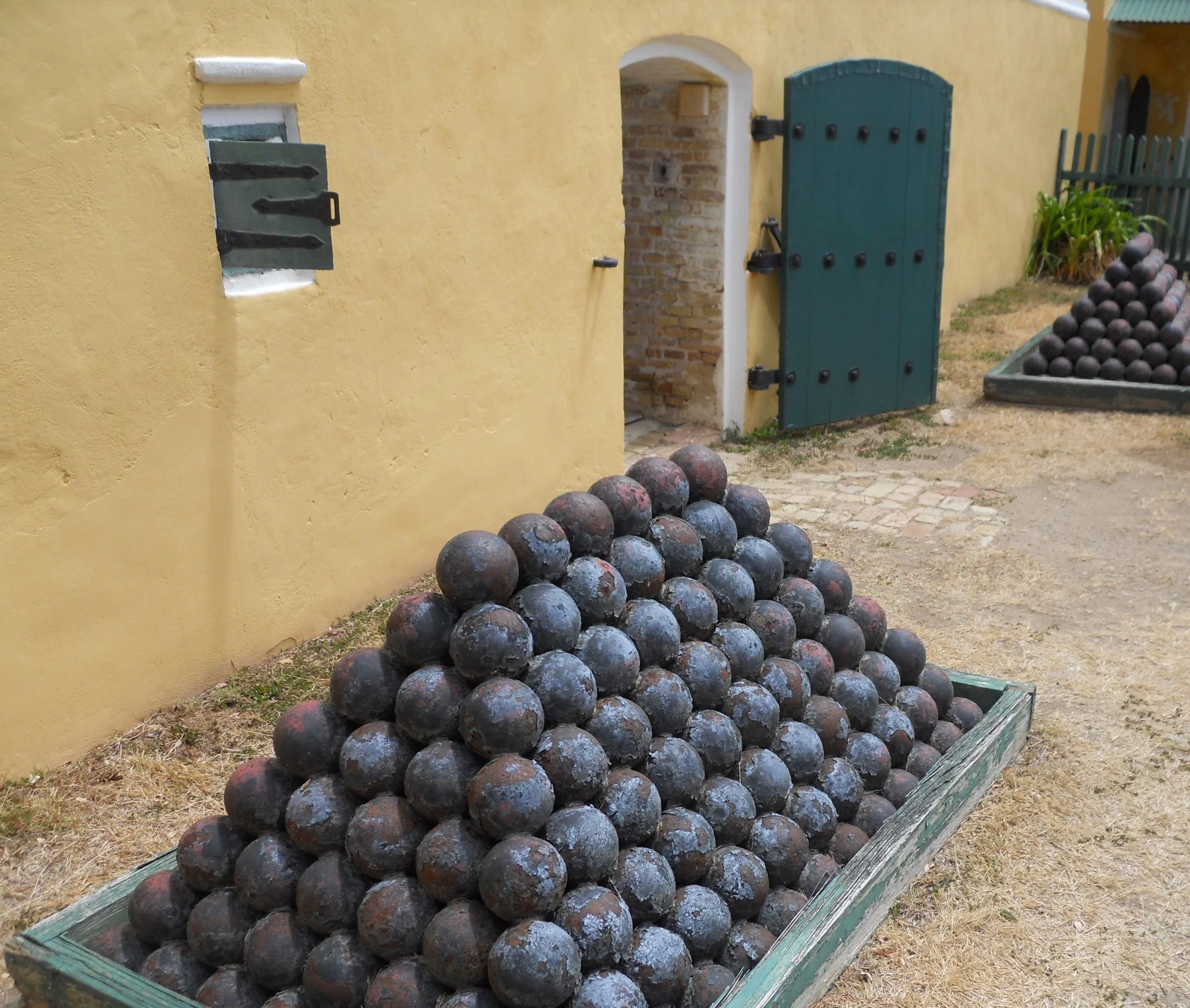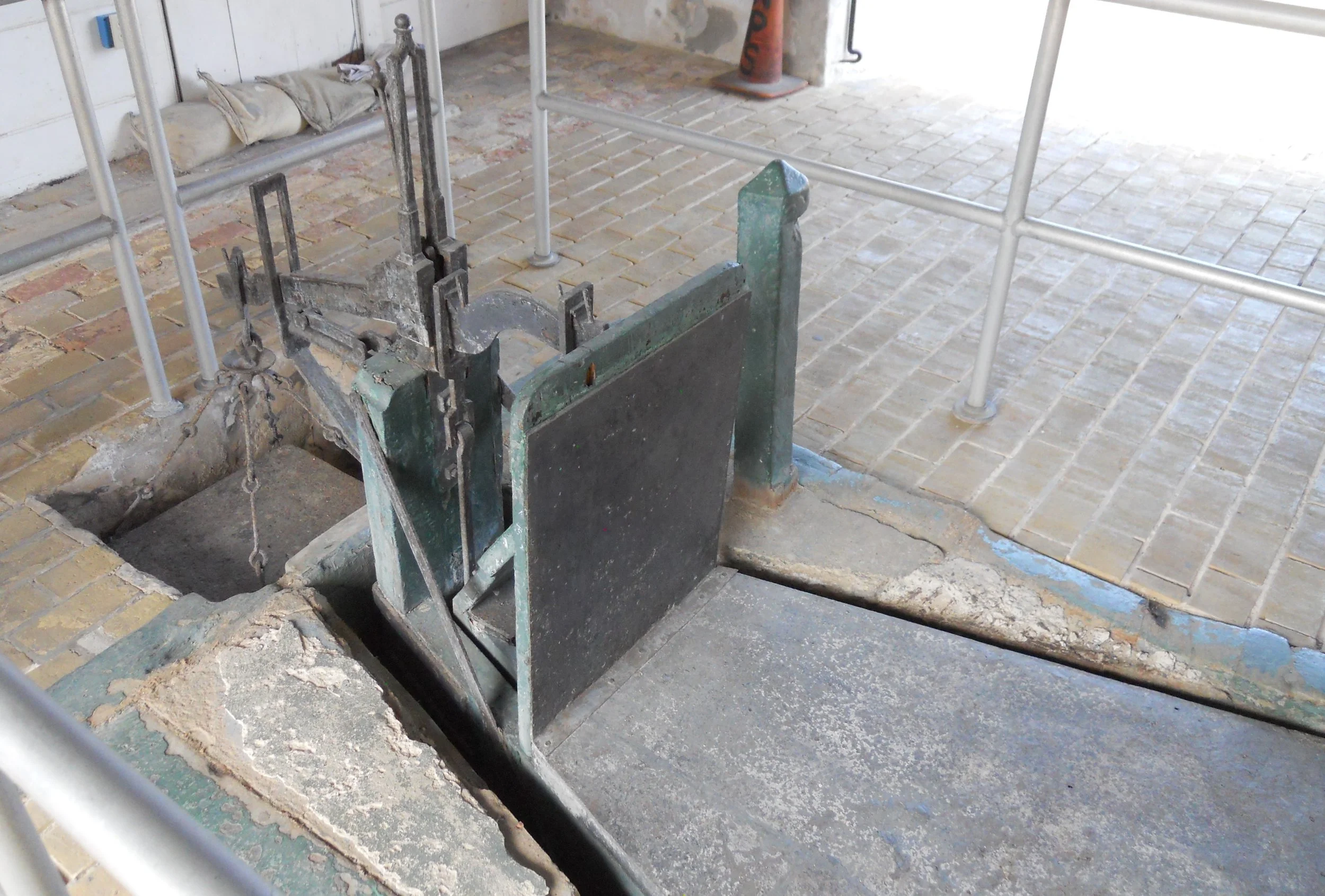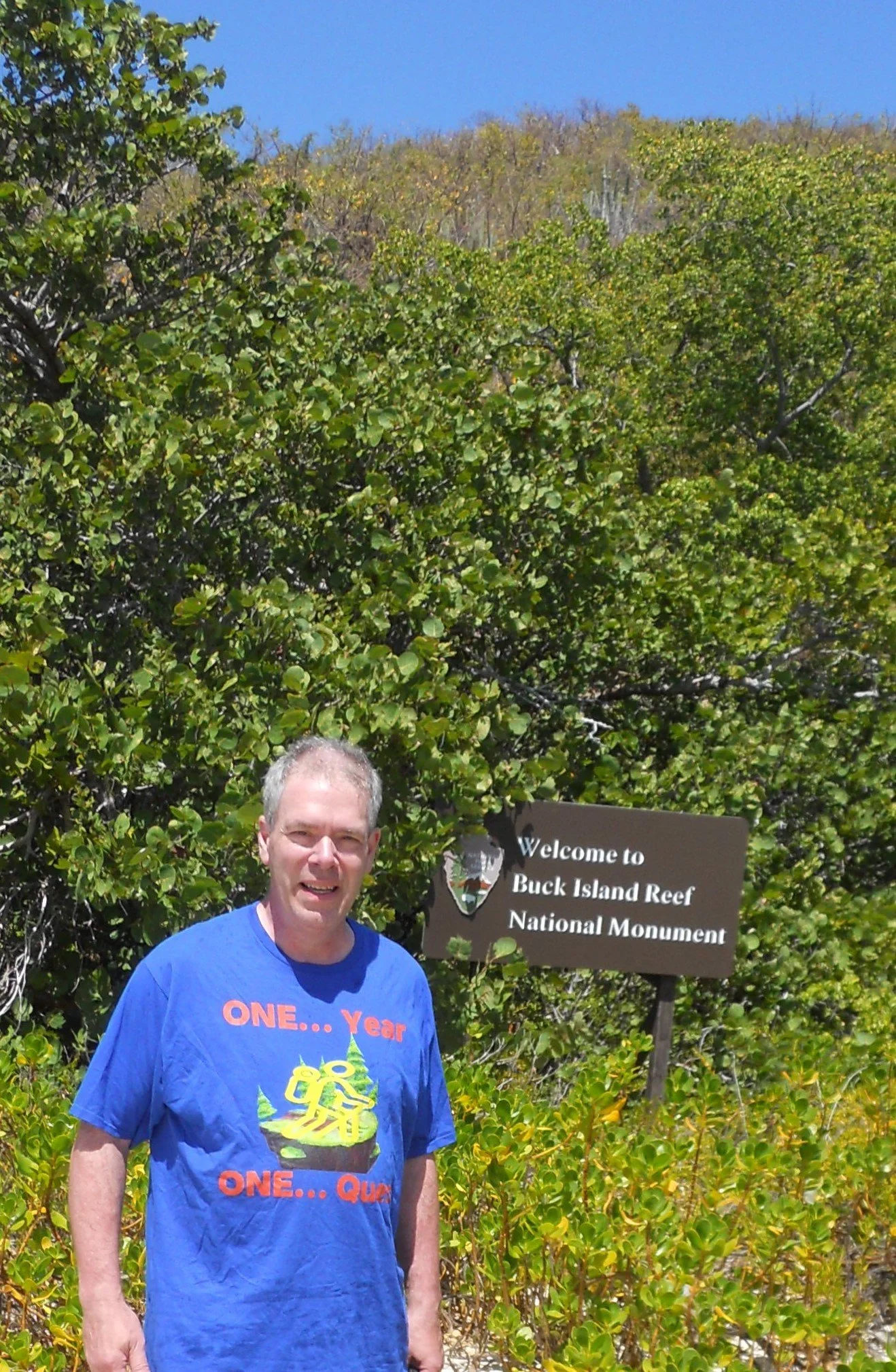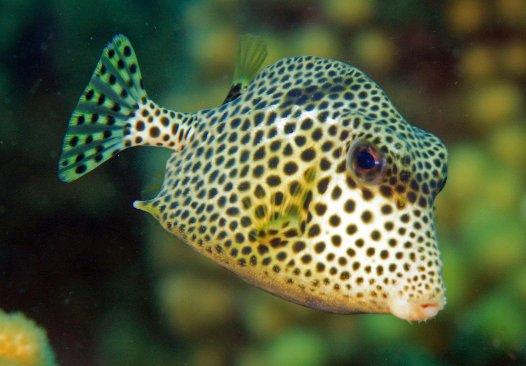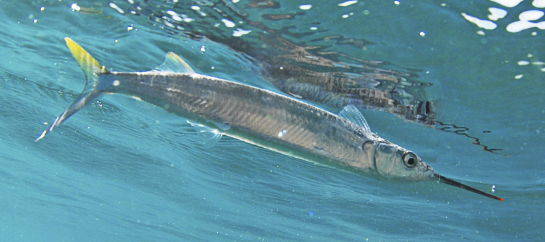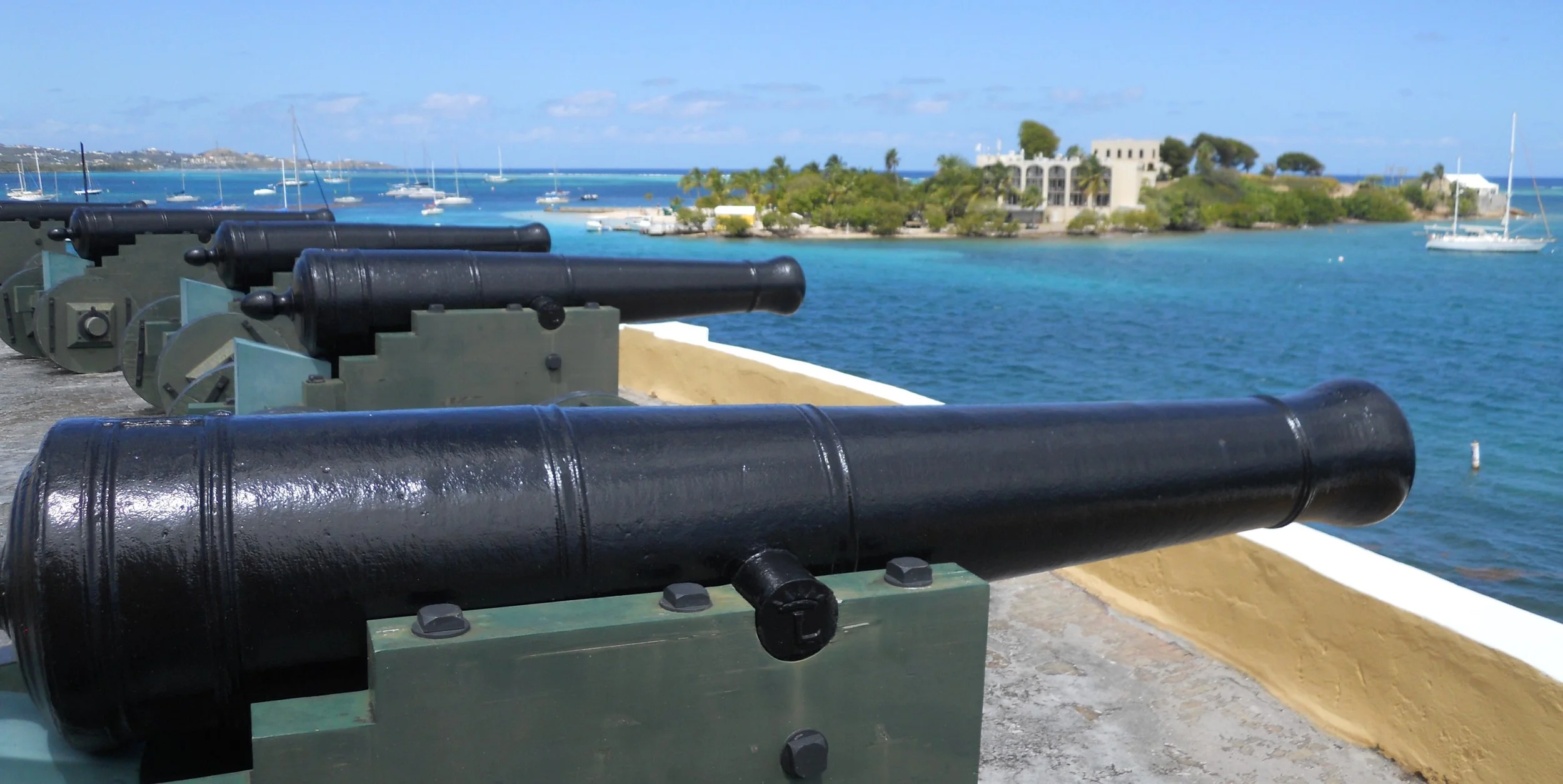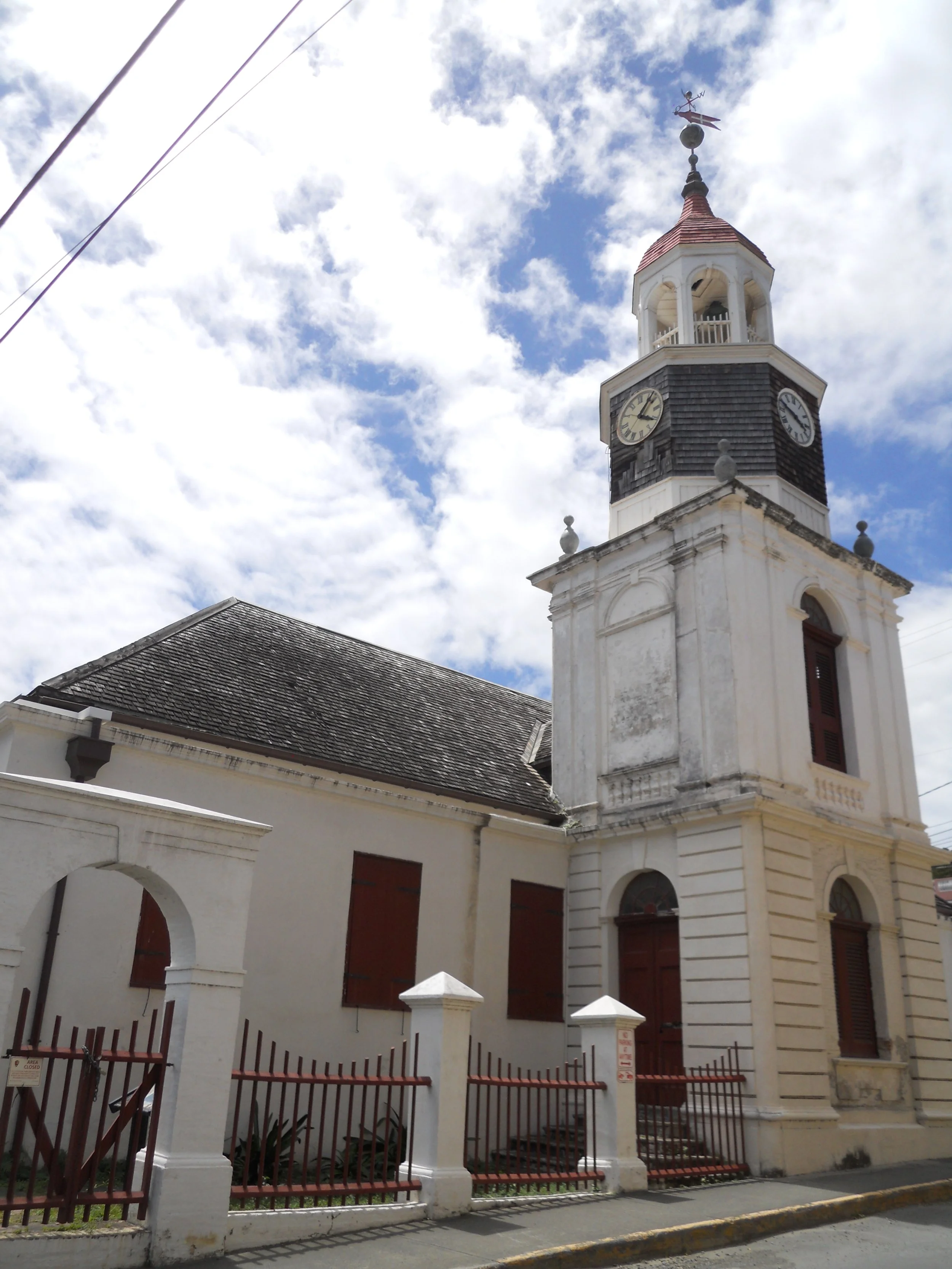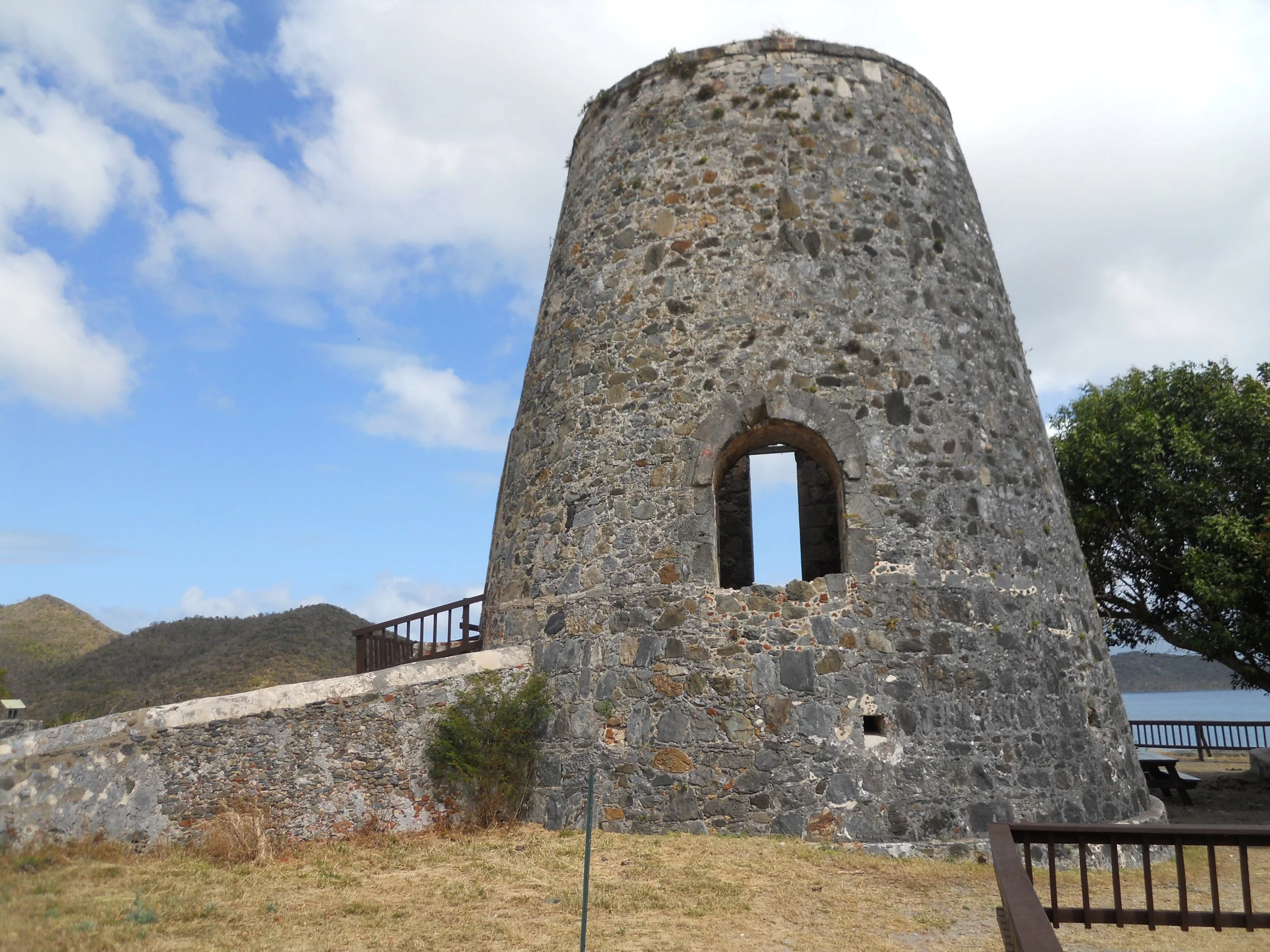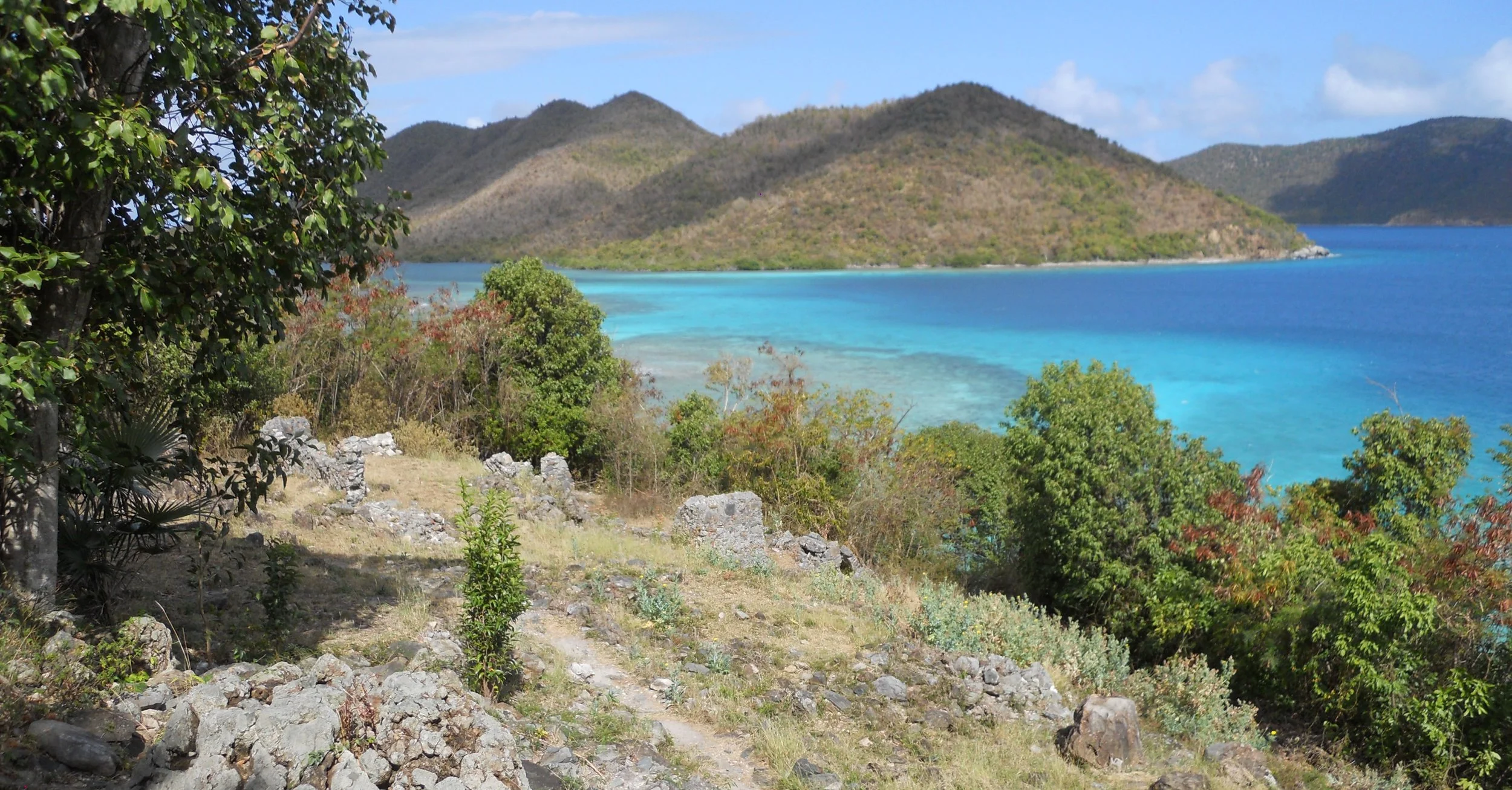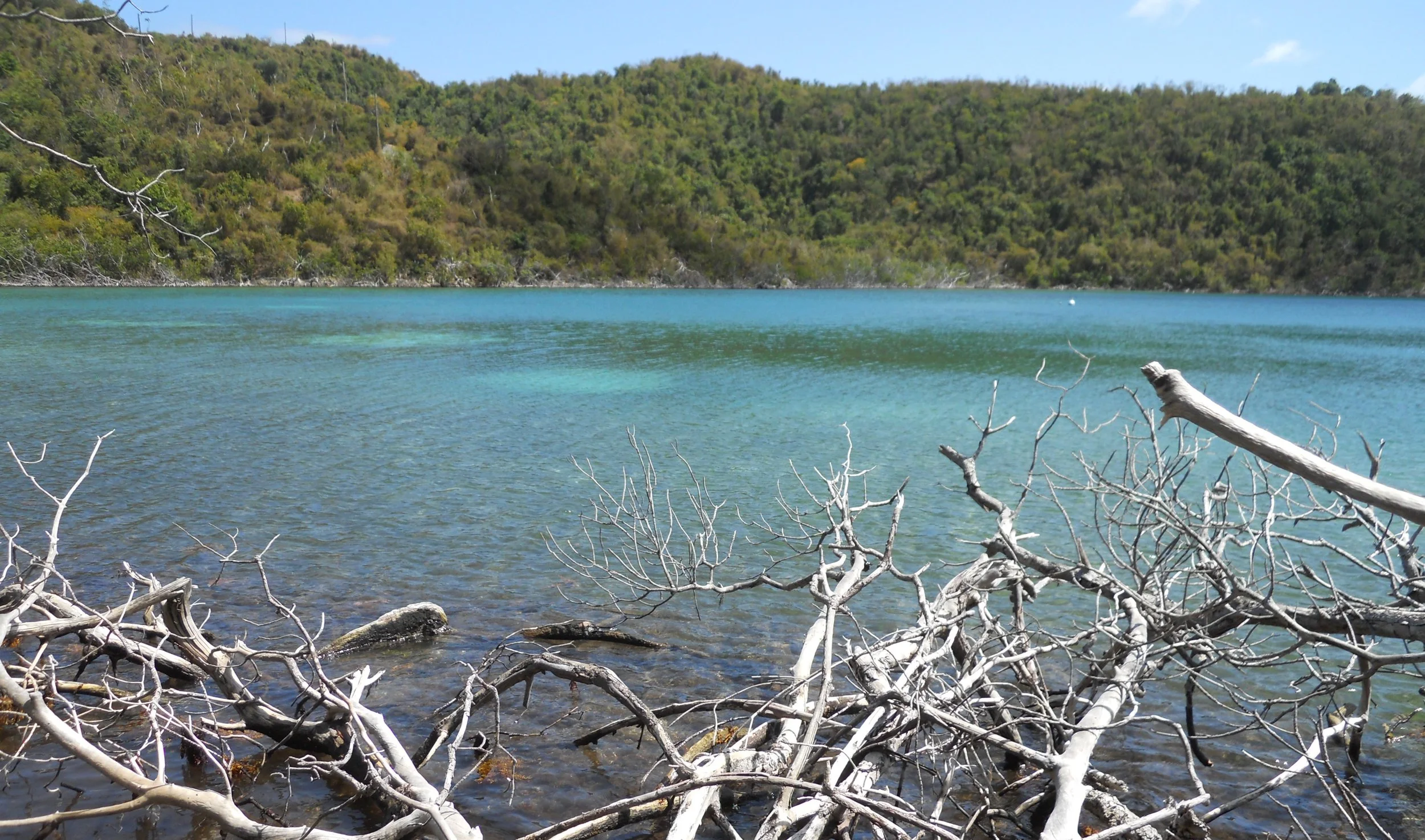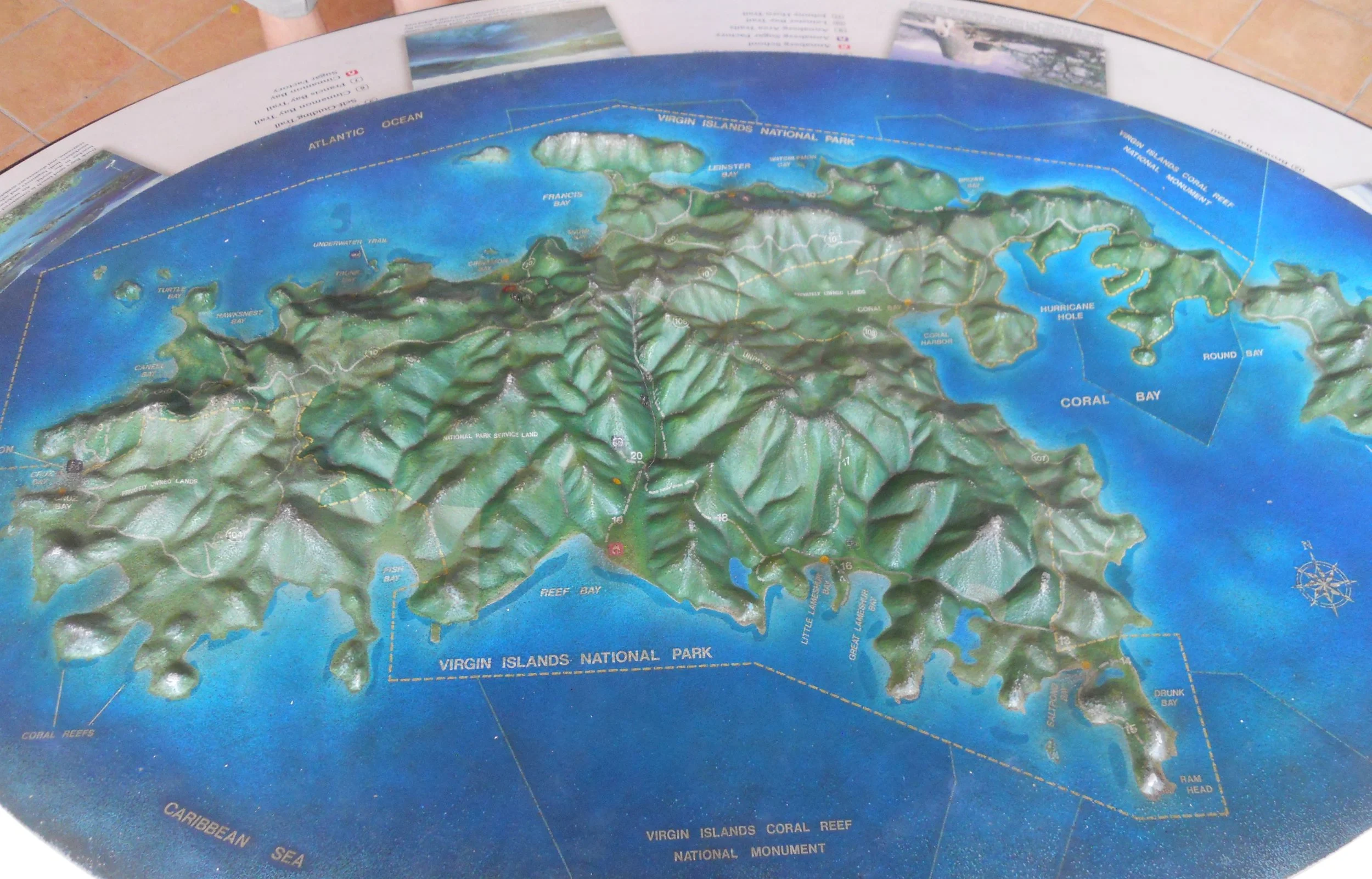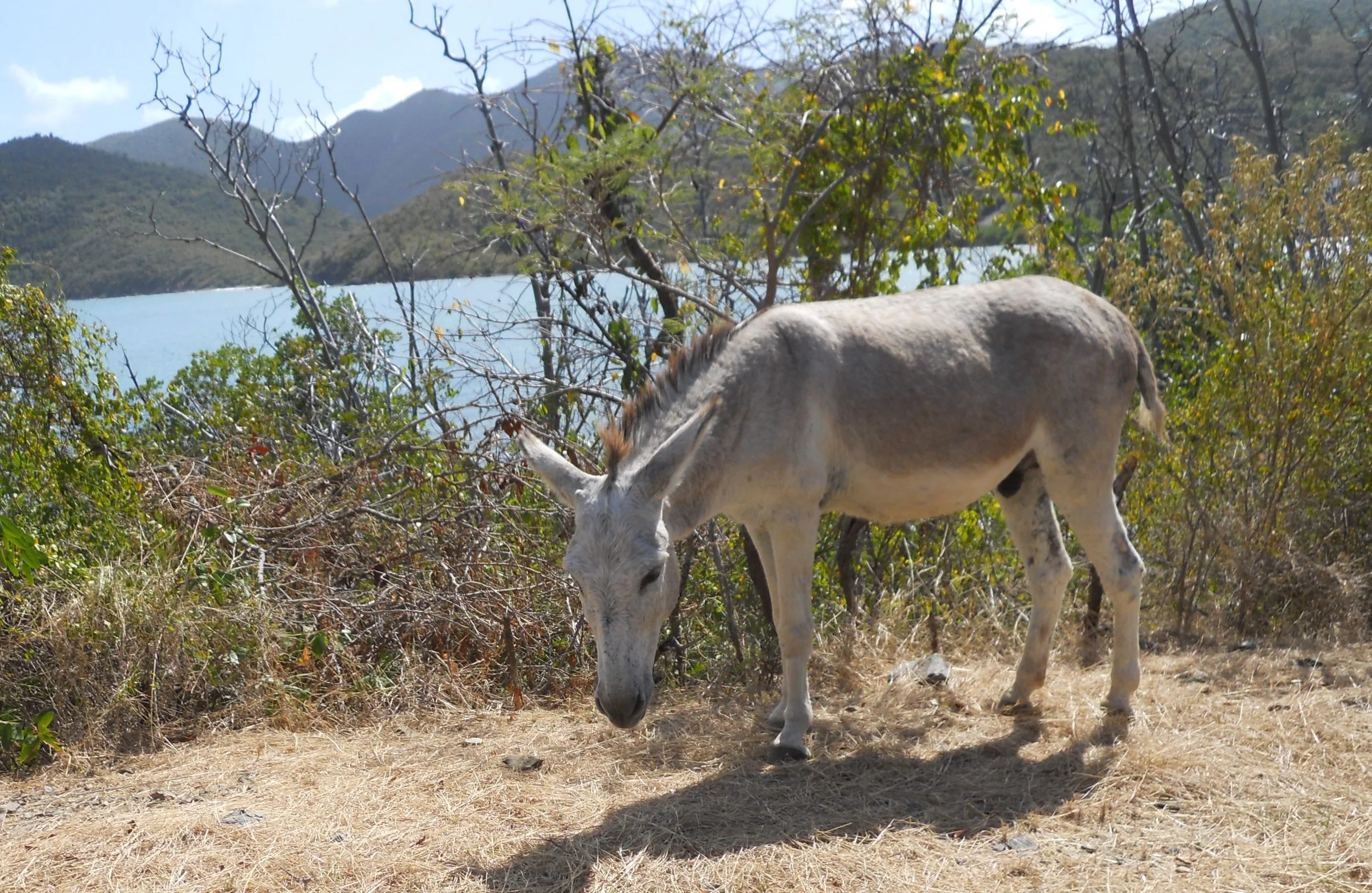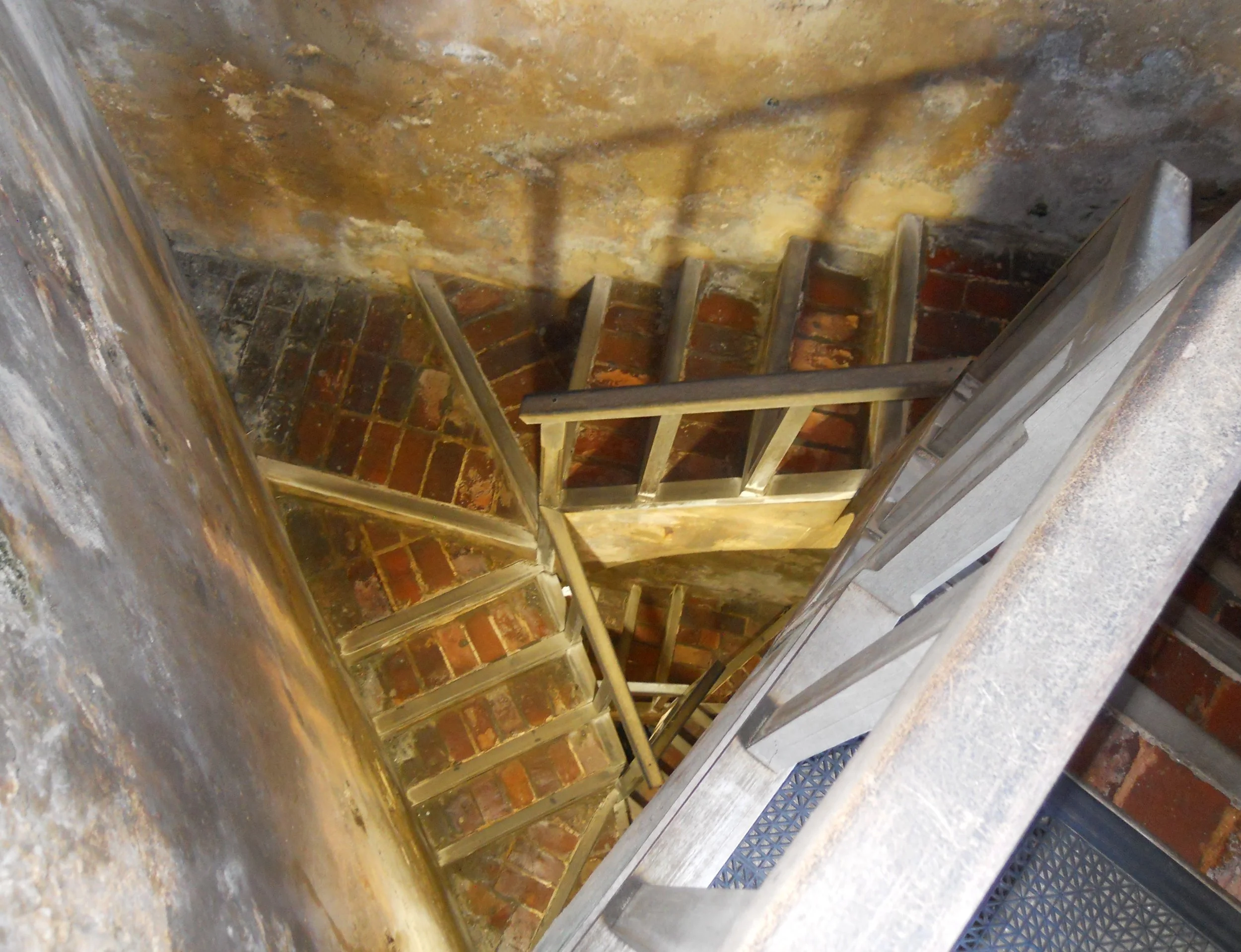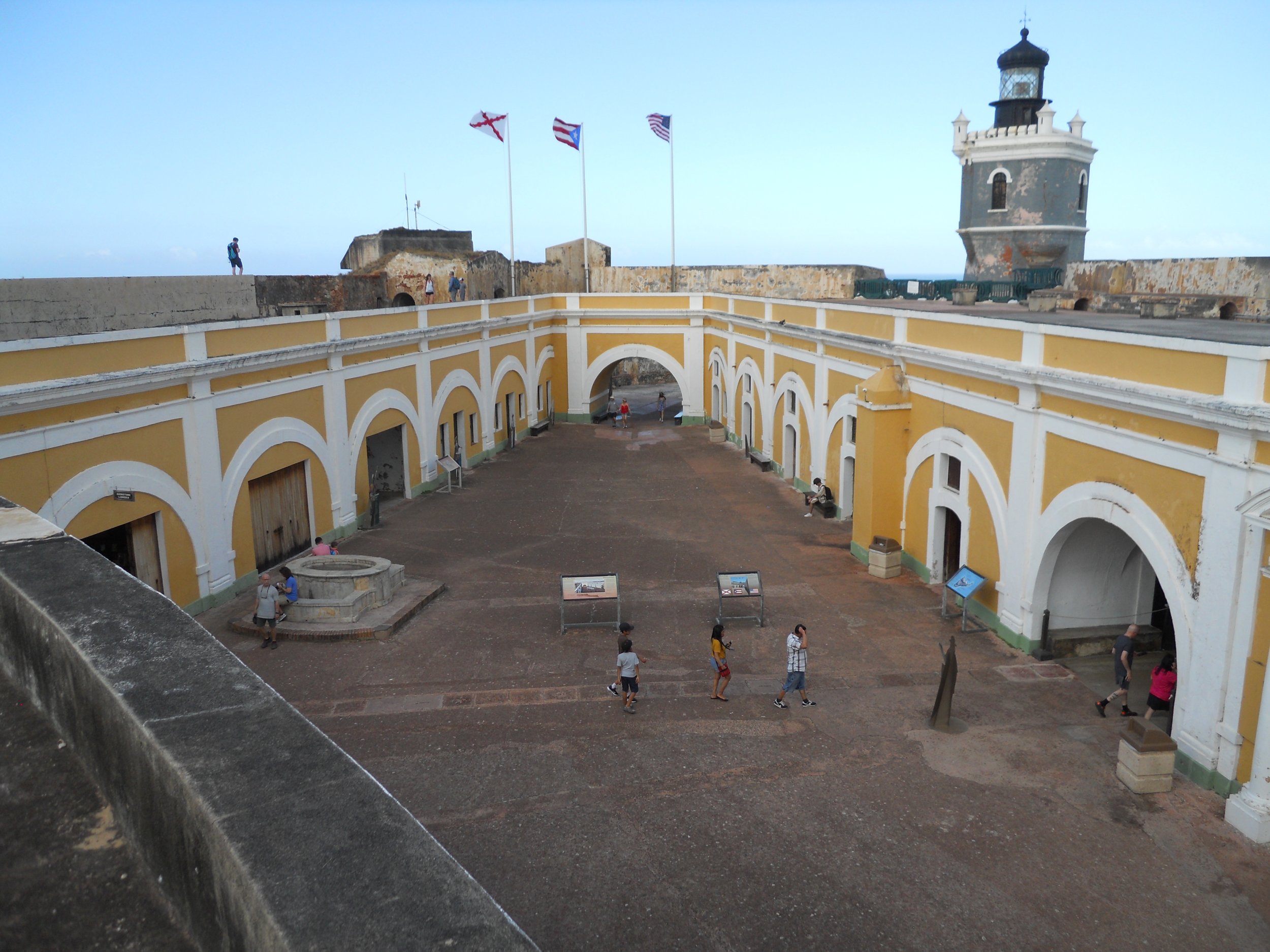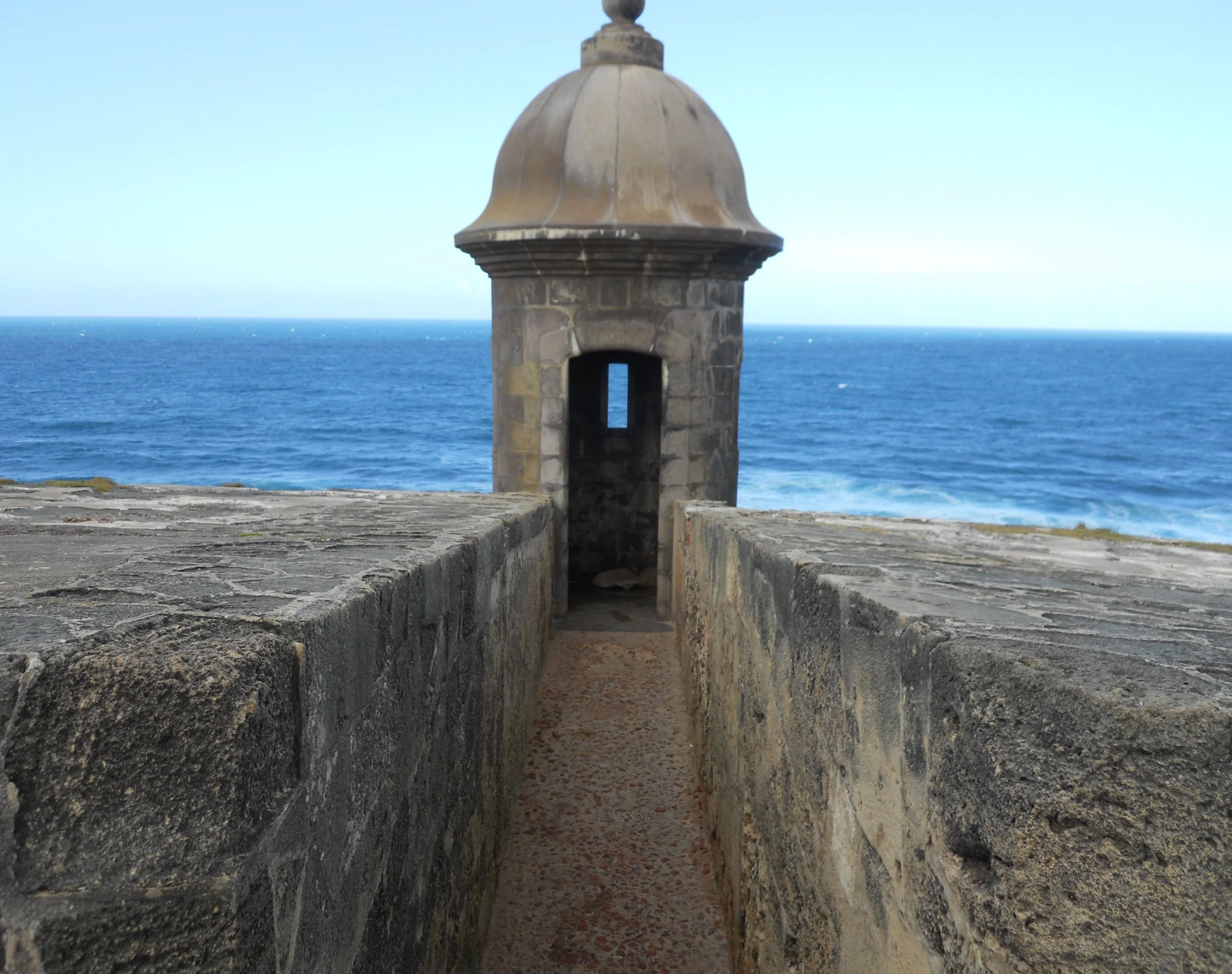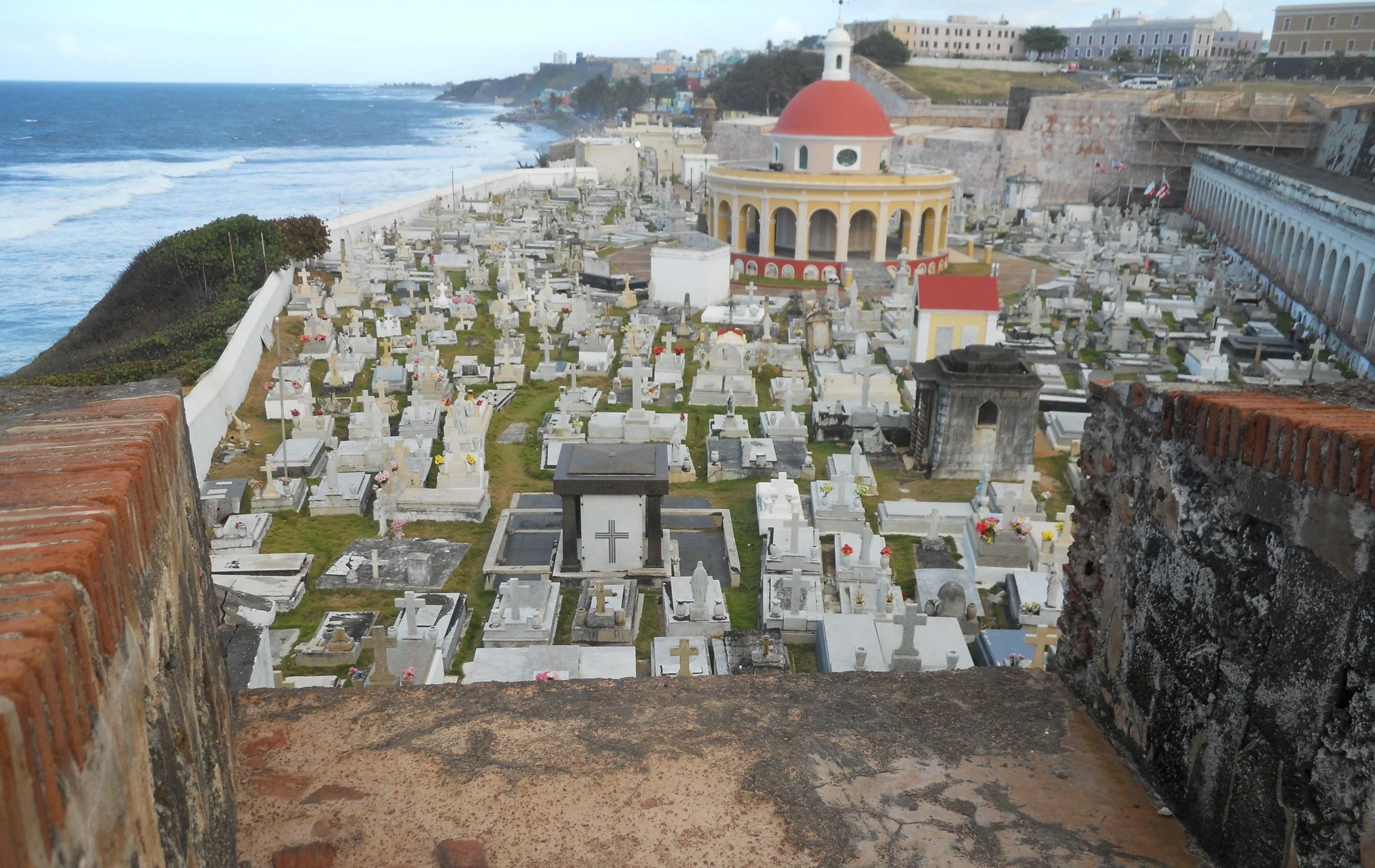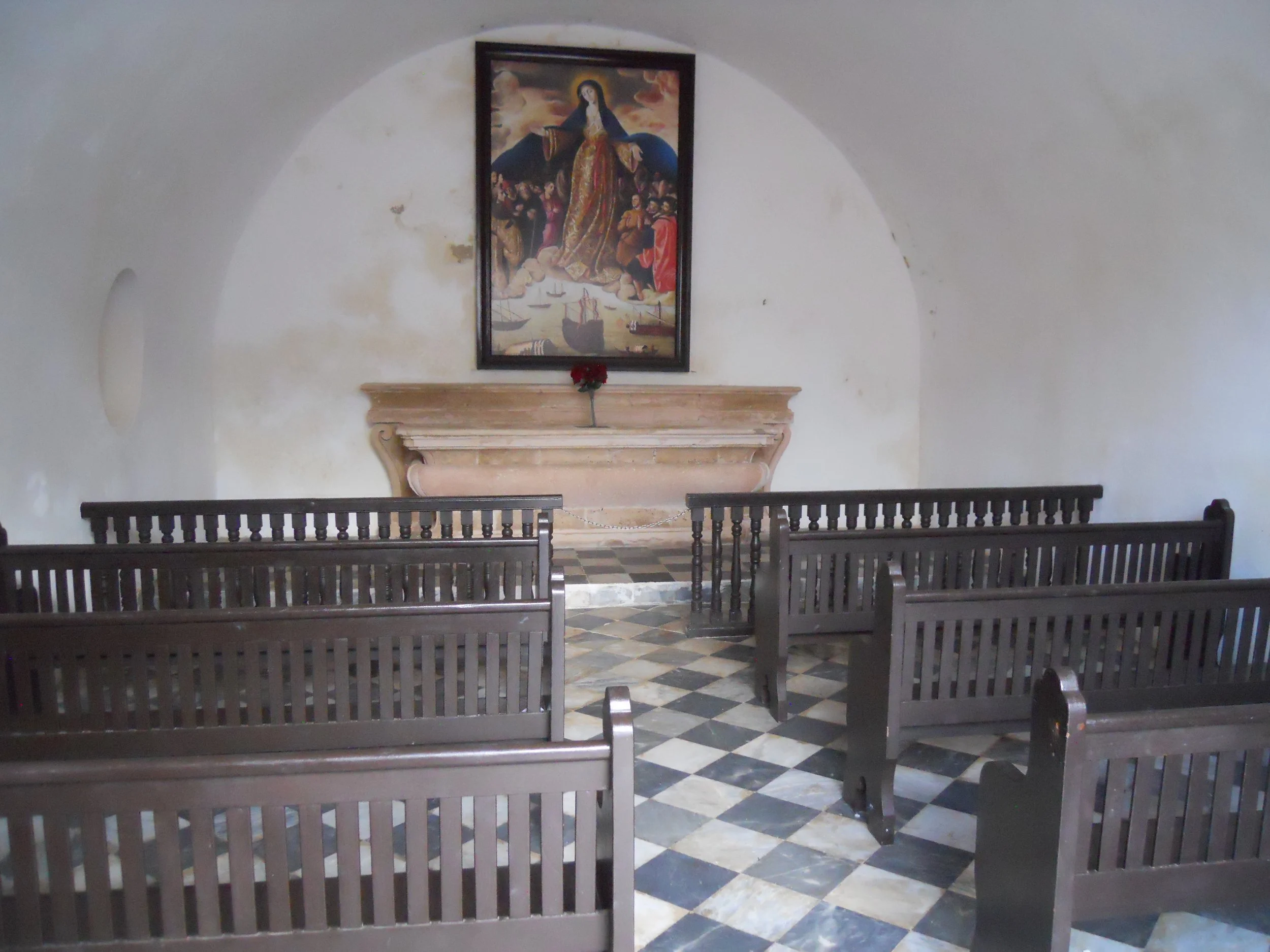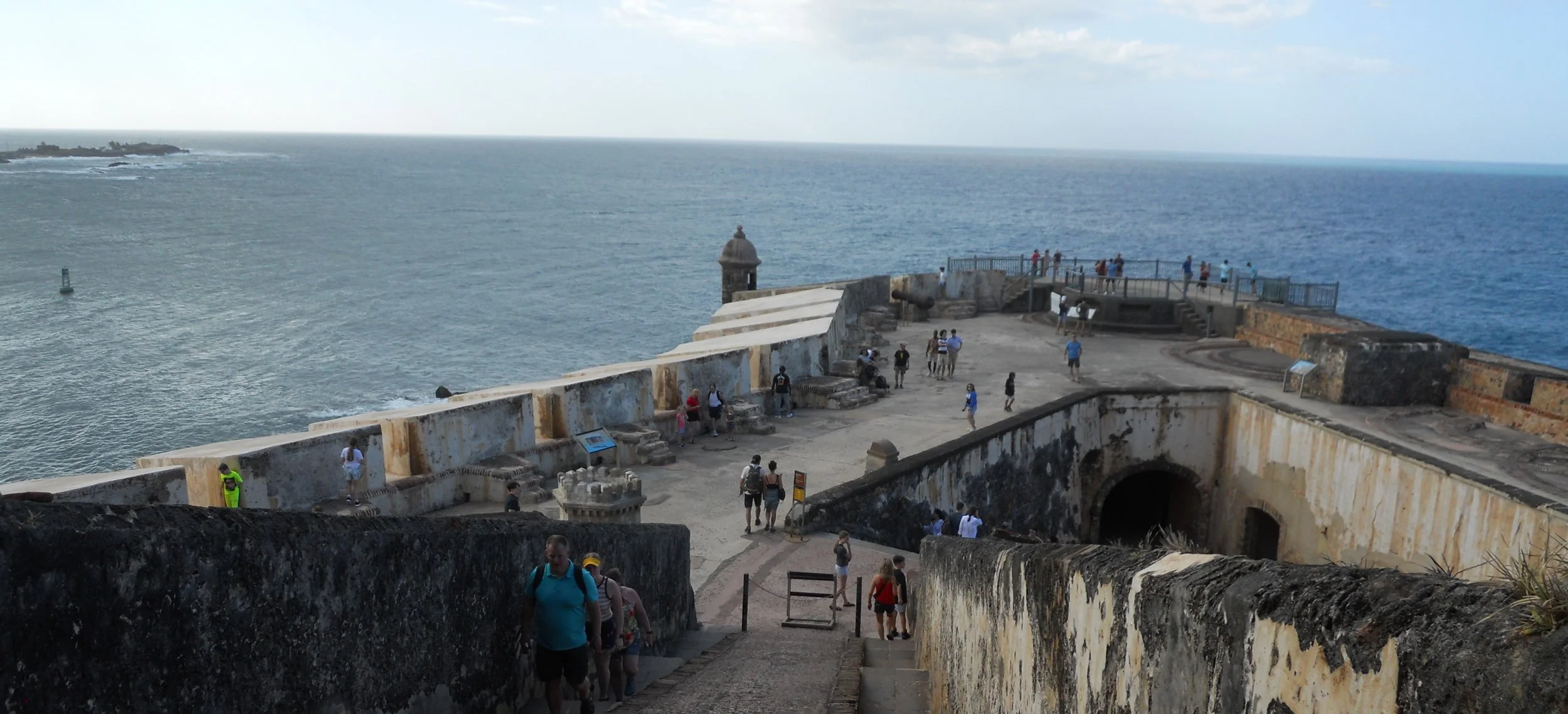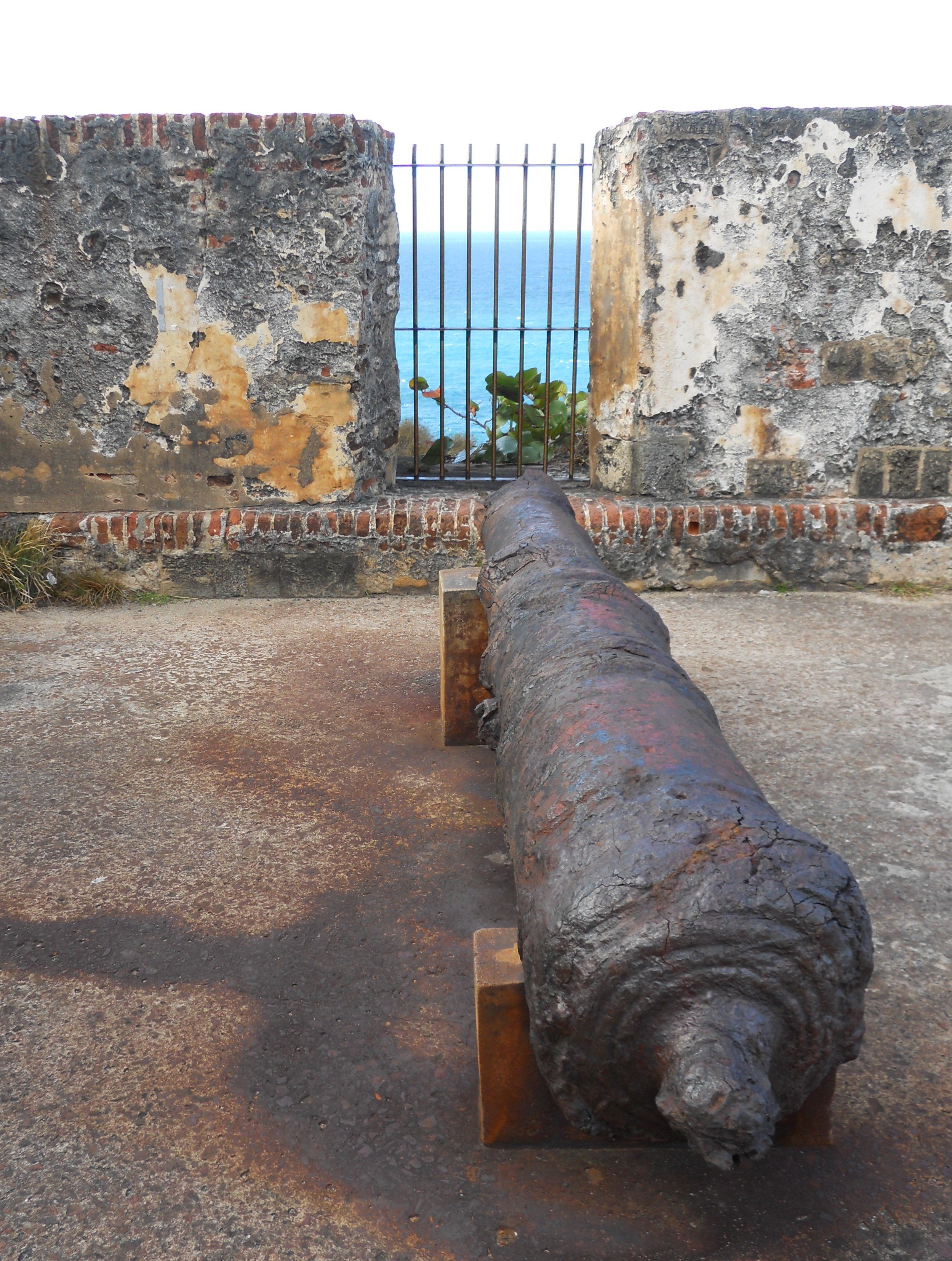photos and text coming in a couple of days for March 23… this wifi is the slowest I have ever seen.
Except this morning it is on high-octane.
DAY 4 (March 23) - Salt River Bay is where Columbus made his second landing in the New World, in 1493. The photo is facing back towards the opening into the bay from the ocean. Archeologists have uncovered details which make them believe Columbus landed in the spot where I am standing.
Fort Christiansted is in need of repairs (as are many of the structures in the NPS). Ranger Evan said new monies have been made available, but the process to get contractors and finalizing planning, can take some time. The courtyard is in the one photo, while the door to the ever-important Powder Magazine is in the other. Cannon are placed on the top of the fort. The first Lutheran church in St. Croix (circa 1750) is also a part of the NPS unit. The scale in the Scale House can be viewed. Every slave from Africa passed through this Scale House to measure his or her weight.
Buck Island Reef was fun. Seeing a lot of different fish is just fun. We saw multiple sea turtles on the trip out to the island, one whose head must have been as big as a softball. Yes, that is me on the island. Just to the right were areas of new turtle nests, so folks were reminded to keep their distance. White flags were stuck in the ground where nests had been identified. This is prime egg laying season. The west end of the island was nice and calm. The east end had waves crashing against the reef. Plenty of coral and rocks were protruding above the surf line. More fish species than I could ever log, but the Spotted Trunkfish and the Blueheaded Wrasse were two of my favorites. No need to show a Great Barracuda since most folks know what they look like. And nothing like having a professional boat crew to keep everyone safe and having a great time.
Likewise, no need to show a kayak. But the first blue image comes from the “blue cloud” of one type of glowing organism. The other which I saw during the trip were the single “sparkles”. At times there were hundreds flying beneath the sea-thru kayak I used.
Lastly, one of those Ballyhoo fish which jumped into the kayak on the return to dock.
